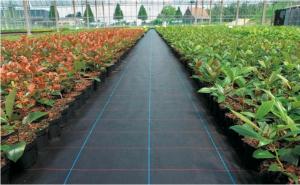Fish farming, also known as aquaculture, has been an essential part of global food production for centuries. As the demand for fish continues to rise, innovative ways are necessary in order to meet this demand sustainably. One such technique is employing ‘tanques geomembrana para peces’ otherwise called geomembrane tanks for fish. These tanks are meant to improve the conditions in which fish grow and develop hence increasing the levels of harvest while at the same time reducing environmental impacts.
The Evolution of Fish Farming: From Ponds to Geomembranes
Traditional practice of rearing fish often involved creating or utilizing natural ponds. Space requirements limited these methods, poor water quality and disease control further affected their efficiency. However, the industry has changed significantly with the introduction of geomembrane tanks that make it possible to carry out controlled and efficient fishing system activities (Bardach et al., 1972). Geomembranes are artificial materials that provide a long lasting waterproof barrier thereby making them suitable for building fish tanks.
The Benefits of Geomembrane Fish Tanks
Geotanks Flora
Stability is one benefit of using geosynthetic lining systems such as these. They can be regulated easily and efficiently ensuring soil quality and temperature remain optimum (Mair et al., 2010). Consequently, this promotes healthy growth rates which increases yields from farms as well as survival rates among fishes (Rosenberry & Winter, 2007). Moreover, they do not encourage algae and other organisms that may affect the stability of a tank necessitating chemical use hence promoting a better culture regarding sustainable farming practices.
Design and Construction of Geomembrane Tanks
Designing geomembrane tank for fish involves balancing between engineering principles and environmental features. With most being built on topsoil layers compacted into a solid base beneath high-quality synthetic liners and some form or protection layers atop them so as to shield these liners from damage. In terms of assembly, the tanks must be assembled and dissembled in a simple way so as to allow for scaling up or down depending on demand or changes in environmental conditions. This adaptability is especially valuable to farmers who operate under high market volatility or are located in regions with unpredictable weather patterns.
Environmental Impact and Sustainability
Sustainability is at the heart of modern fish farming practices, and geomembrane tanks play a vital role in this. They create a confined environment that reduces the reliance on natural water resources thereby maintaining aquatic systems (Lawson et al., 2011). Additionally, when one uses geomembrane technology, he/she avoids the situation where his/her fish may escape into the nature leading to negative consequences for local ecosystems (Sivakumar et.al, 2013). Finally, more efficient use of water and feed means that less waste occurs contributing to sustainable aquaculture.
Economic Considerations
The initial cost of installing such materials may appear high from an economic perspective. But there are major long-term returns involved (El Bassiouny et al., 2008). Higher profits will be realized by farmers due to increased yields and lower incidences of diseases among fishes raised through this method (De La Noue & Pauwels, 1994). Similarly, production is possible throughout all seasons as it is unaffected by weather changes thus offering a continuous income regardless of market forces’ fluctuations.
Challenges and Solutions
Although these have many advantages there are several problems associated with geotanks. One primary concern has always been leakage which may lead not only reduce stock but also negatively affect the environment around them (Lum & Whitefield, 2012). However, better materials and construction methods have improved this situation considerably over time. Moreover regular checks and maintenance ensure that tanks remain intact all through their useful life’s period.
The Future of Fish Farming with Geomembranes
With the increasing population, the world is struggling with how to feed them. It means that fish farming will play a greater role in the future. This is why geomembranes have been identified as an answer for sustainable and efficient fish production. Thus, further research and development should bring about better designs and performance of geomembrane tanks since they must keep on satisfying farmers’ necessities as well as ecological prerequisites.
Conclusion
In conclusion, ‘tanques geomembrana para peces’ signify a major step forward in aquaculture. Through such structures, controlled environments are created where fish can thrive leading to higher yields and more revenue for farmers while also reducing environmental degradation. Therefore, moving forward, innovation and embracing of geomembrane tanks is essential to ensure sustainability in response to worldwide requirement for fish.







